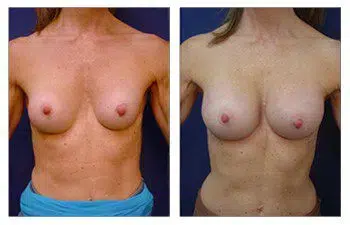
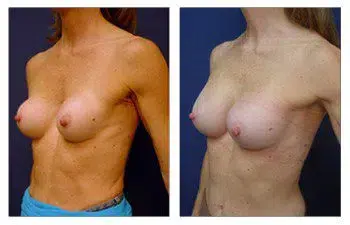
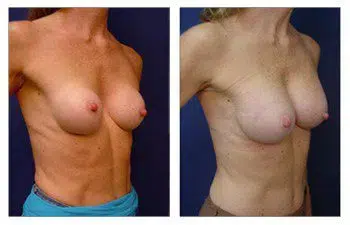
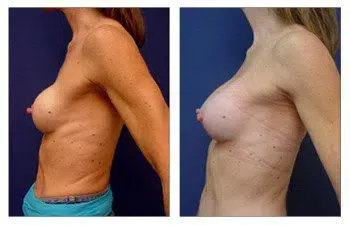
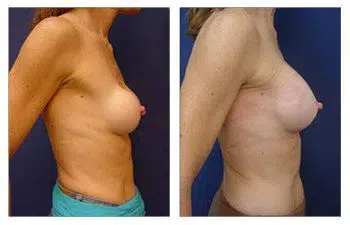
breast augmentation revision procedure may be done to correct capsular contracture and asymmetry of the breasts and allow you to correct your breast size and shape.
Capsular contracture and asymmetry are two complications of breast augmentation procedures. While the misjudgment of the primary surgeon may create asymmetry, capsular contracture may often be affected by factors not under the surgeon’s control. Regardless of your circumstance, if you are exhibiting similar concerns as this patient, a breast augmentation revision surgery may address all of your breast irregularities.
Breast asymmetry following breast augmentation is an unfortunate result that often stems from suboptimal evaluation during the initial consultation. A proper breast implant consultation must include detailed measurements of your entire breast and body.
Additionally, consulting a surgeon who has all the breast implant sizes on hand is a huge advantage to ensuring that breast asymmetry is corrected.
Access to an assortment of implant sizes is critical to utilizing variable implant sizes to correct any size asymmetry once implants and scar tissues are removed. This is because it is not uncommon for patients not to know their current implant size. In addition, the thickness and subsequent volume of scar tissue can be variable and only fully appreciated once surgery is performed. As such, committing to the final implant size at the time of surgery is only possible.
Capsular contracture is the thickening of the scar tissue or capsule that naturally forms around the implants. When this capsule thickens, it will strangle the implant, causing the breast mounds to become firm and even make the implant shift in its position. When capsular contracture is chronic, patients may feel discomfort in their breasts and deformity.
A capsulotomy or capsulectomy may be prudent in cases of symptomatic capsular contracture.
For a breast that presents with capsular contracture and asymmetry, a breast procedure to the scarred capsule is necessary to create a new pocket for the placement of breast implants. Not only will this result in a more harmonious and ideal breast appearance, but it may also relieve chest pain caused by thickened capsules tugging on pain fibers.
Patients may desire a breast augmentation revision for various reasons like correcting capsular contracture and asymmetry. In this patient’s case, she not only wanted to become symmetrical but also wanted a bigger overall size as well. Thus, she increased the breast implant size in both her right and left breasts to achieve her dream breast size and shape.
If you have a capsular contracture and asymmetry, contact SurgiSculpt to schedule a complimentary consultation today.
This 54-year-old female is shown before and after revision surgery to correct capsular contracture and asymmetry of the breast.

